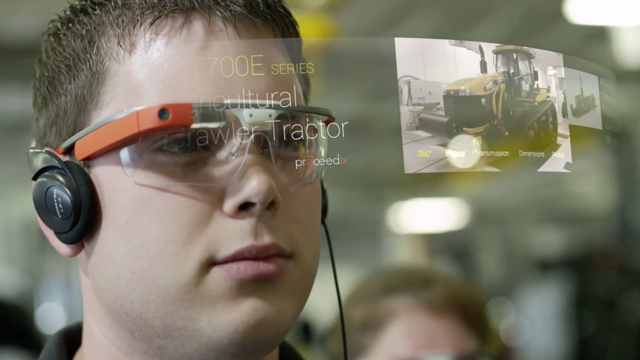Alphabet is launching Glass Enterprise Edition, a new version of Glass, its head-mounted computer. The first version, aimed at consumers, drew widespread concern about privacy, since it could record in public places. This second Glass, targeting corporate customers and training, has been tested at 50 corporations, including Boeing, General Electric and Volkswagen. Designed as a device that snaps on to eyeglasses, Glass allows workers to view instructional content, including video and images, and even broadcast what is viewed to others for real-time instruction.
The Wall Street Journal reports that, whereas the first Glass cost $1,500, the price for the Enterprise Edition depends on “the needed software customization, customer support and training.”
Sales of the first Glass version were halted in 2015, and the product category seemingly disappeared. But, as reported by WSJ, in the same year, Google began to distribute new glasses to partners for testing; “Deutsche Post AG’s DHL unit was one of the early business use case tests for the glasses,” used for “employees fulfilling online orders in warehouses, allowing them to receive real-time instructions about where to find items and where to put them, according to Google.”
Wired reports that agricultural equipment manufacturer AGCO has been an “early adopter of Glass EE,” as well as “dozens of workplaces” that have been using it for the last two years. EE, it says, is “an improved version of the product that originally shipped in a so-called Explorer Edition in 2013.”
The Enterprise Edition is being introduced in other businesses, such as medical practices, as a way to “transform previously cumbersome tasks,” with a computer display that “one could view simply by shifting one’s gaze and taking in the rest of the world as it is.”
On the Enterprise Edition, “technology [is] completely accessible for those who wear prescription lenses,” and “the camera button, which sits at the hinge of the frame, does double duty as a release switch to remove the electronics part of unit (called the Glass Pod) from the frame,” which can then be connected to OSHA-certified safety glasses or “frames that look like regular eyewear.”
“We did a lot of work to lighten the weight of the frames to compensate for the additional weight [of the Pod],” said Glass Enterprise project lead Jay Kothari. “So the overall package with Glass and the frames itself actually comes out to be the average weight of regular glasses.” Glass EE also offers “beefed-up networking” with “more rigorous security standards — and a faster processor as well,” extended battery life, an 8-megapixel camera, and a green light that goes on when video is being recorded.
“This isn’t an experiment,” said Kothari. “It was an experiment three years ago. Now we are in full-on production with our customers and with our partners.”


No Comments Yet
You can be the first to comment!
Sorry, comments for this entry are closed at this time.